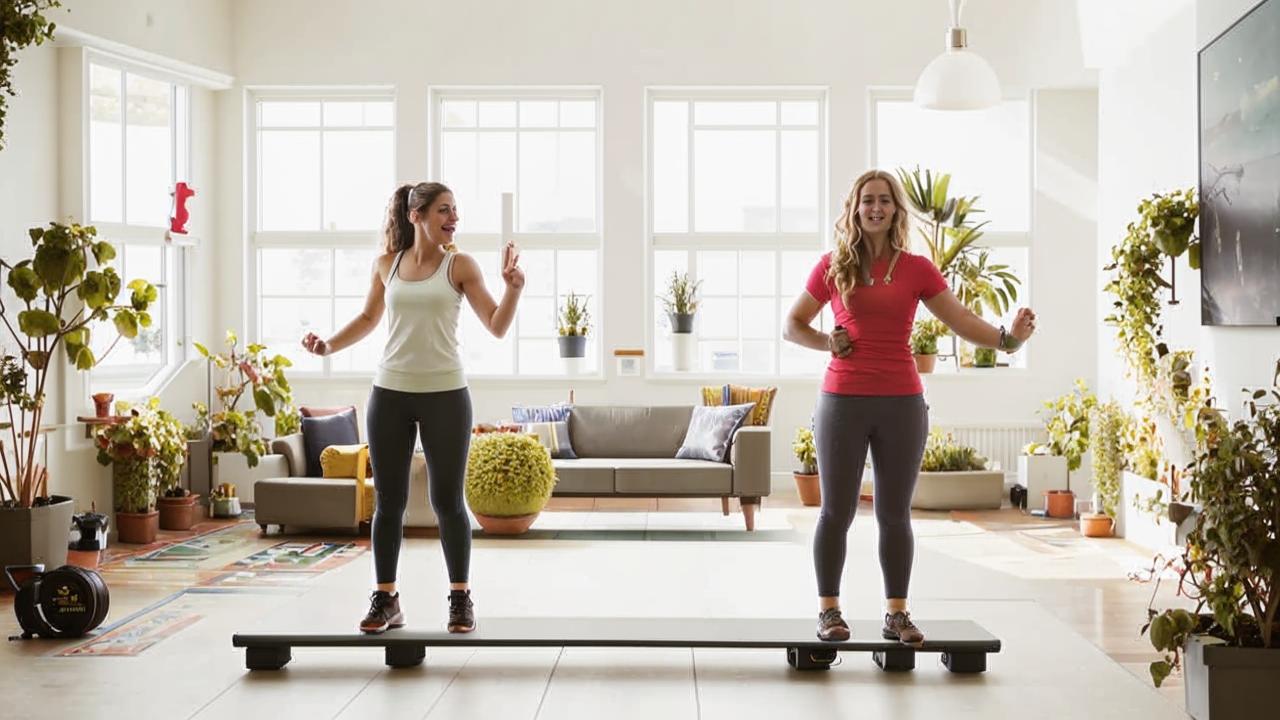We tell you together with the trainer.
The vestibular apparatus is most often mentioned when we are talking about the ability to combine information about the position and movement of the body coming from different sources and react to it adequately. Simply put, to keep balance, coordinate movements, maintaining the necessary posture or changing it in accordance with the task.

ultramarathoner, founder and coach of ERA running club
Many people have problems with the vestibular apparatus, so it is important to develop it from childhood to avoid difficulties in everyday life.
Why the vestibular apparatus should be developed
The development of the vestibular apparatus begins immediately after birth: when a child is picked up, carried, rocked, laid down and turned – all movements are perceived by the sensitive cells of the vestibular organ, and its signals to the brain are processed together with information from the organs of sight and touch.
Further training occurs during normal development, when the child begins to move independently, especially at the stage of mastering walking – it is associated with the most important skills of maintaining balance at rest and in motion.
Training the vestibular apparatus also comes in handy in sports, especially in games and martial arts, and in transportation-related professions. However, in real life the ideal scenario is not always realized: illnesses, injuries, peculiarities of upbringing and social environment often leave a child without proper physical activity. As a result, even in adulthood people do not tolerate movement with changes in speed and direction, sharp turns of the head, flashing objects in front of the eyes and various types of discordance of information from different senses.
Exercises to develop the vestibular apparatus
Development of the vestibular apparatus in the adult state is based on the same principles as any other physical training:
- the training load should be sufficient to cause the necessary adaptive changes, but not to exhaust;
- exercise should be regular, it is better to spend 15-20 minutes on training 6-7 times a week than 1.5-2 hours once a week;
- there is no one-size-fits-all recipe, everyone needs an individual approach;
- if the qualities developed in training are not used, they gradually fade away, and even to maintain what has been achieved, it is necessary to continue training in a supportive mode.
For the development of the vestibular apparatus, any exercises in which you need to change the position of the head, as well as catch and hold the balance are suitable.
If you want to check coordination, a few exercises will help. Told about them in the material below.
Tilts and rotations of the head in a standing position
Teknikk
- Stand up straight, look forward, lowering your relaxed arms.
- From this position, lean your whole body slightly forward, shifting your body weight to your toes, then rise on your toes.
- Smoothly return to the starting position, transfer your body weight to your heels and rise on your heels, raising your toes.
“Fall” on the wall
Teknikk
- Stand up straight, looking forward, lowering your relaxed arms.
- From this position lean your whole body forward, falling on the wall – put your hands forward, resting them on the wall and preventing the fall.
- Push off the wall and return to the starting position.
Gradually, the exercises can be made more difficult. For example, you can do them standing on one leg or closing your eyes. At first, even 30 seconds with closed eyes seems difficult, then the balance with closed eyes can be kept on one leg and supplemented with movements of the free leg and arms.
Walking with eyes closed
Teknikk
- Stand up straight, close your eyes.
- Make sure that there are no dangerous obstacles and sharp objects nearby.
- Take a few steps forward. Then turn around and try to return to the starting point.
This exercise allows you to improve your sense of balance and coordination. You can take off your shoes and put a thin rope on the floor, then walking barefoot by feel will become a more exciting exercise.

Progress in training can be endless: having mastered something on one foot, then with closed eyes, you can transfer the exercise to an unstable support, BOSU hemisphere or balancing pillow, balance board. Then you can go to the acrobatic gym or trampoline, master rope walking.
How soon you can see results if you exercise daily
The speed of adaptation changes can vary greatly from person to person. For some, two training sessions are enough to get confident on a balance board, while others spend two weeks of daily effort mastering balance on one leg.
Anyway, regular training, starting with the simplest exercises, will definitely bring results. As a rule, progress can be seen after a couple of weeks of training, the main thing is regularity and gradualness.
Balance exercises help not only to develop coordination, but also to relax. About it told in our article.






